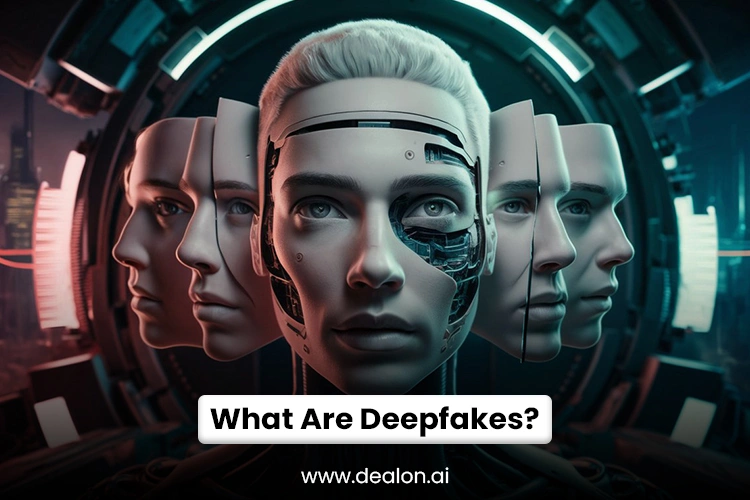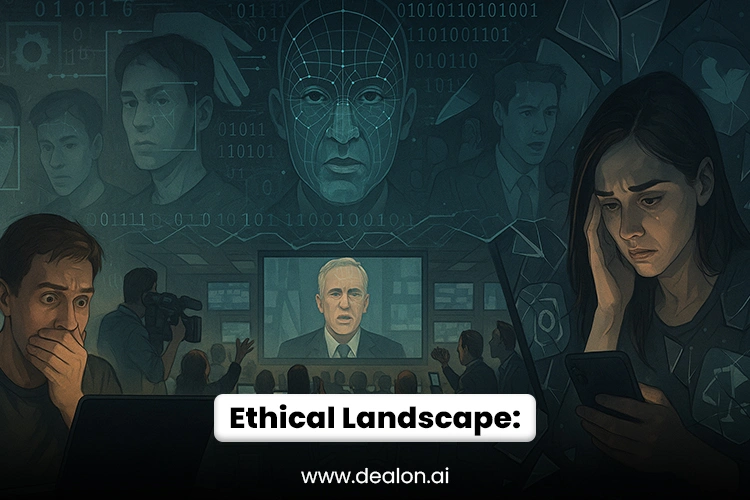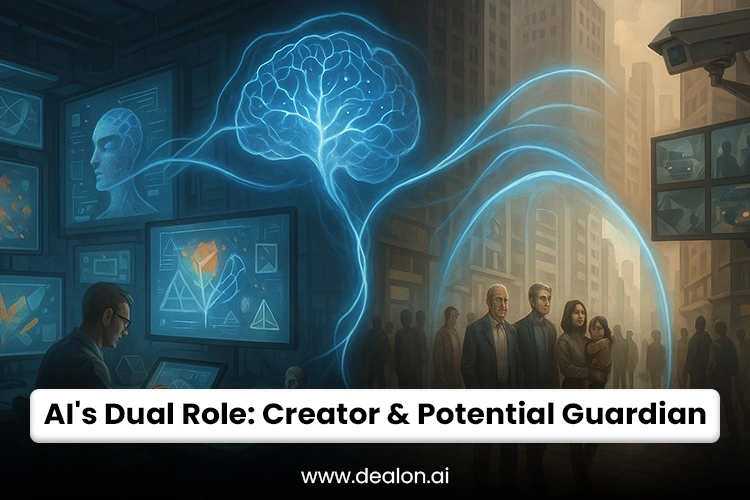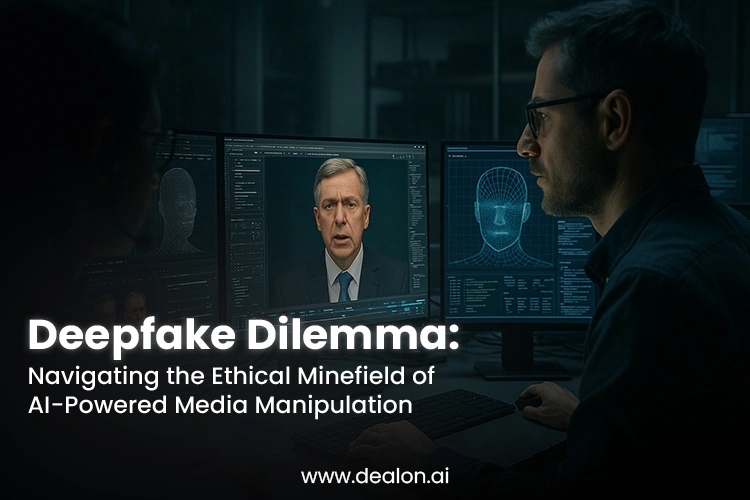In the era of algorithmic dominance, where data is the new currency and artificial intelligence the master craftsman, the advent of deepfakes has heralded a new epoch of synthetic reality. Meticulously fabricated audiovisual content generated through deep learning algorithms has become emblematic of the profound ethical disruption posed by modern technology. These AI-forged illusions can replicate human likenesses with uncanny precision, seamlessly manipulating facial expressions, voice patterns, and body language to create hyper-realistic yet entirely fictitious media.
What was once a novelty in cinematic visual effects has now morphed into a formidable instrument of deception. From tampered political speeches that sow discord among electorates to non-consensual adult content that desecrates personal dignity, deepfakes are rewriting the rules of trust, identity, and truth in digital communication. The implications transcend technological marvel—they strike at the philosophical core of epistemology: What can we truly believe?
AI, paradoxically, sits at both the helm of innovation and the precipice of ethical chaos. As the technology continues to evolve, the absence of robust ethical guardrails has amplified the risk of its exploitation. Institutions, policymakers, and technologists are now confronted with a stark imperative—to navigate the delicate equilibrium between innovation and integrity.
This blog delves into Deepfakes’ multifaceted ethical challenges, exploring their technological anatomy and sociopolitical, legal, and psychological ramifications. It interrogates AI’s dual role as creator and potential truth custodian. It examines the urgent need for ethical frameworks, legal reforms, and digital literacy in countering this rapidly metastasizing threat. As we venture further into this digitally altered landscape, one question remains paramount: can truth survive in a world where seeing is no longer believing?
Also Read: 6 Breakthrough AI Technologies Driving the Future of Logistics & Supply Chains
What Are Deepfakes? Understanding the Technology Behind the Facade

Deepfakes represent one of the most sophisticated and disruptive innovations in artificial intelligence—an intricate fusion of machine learning and digital manipulation that challenges the essence of visual and auditory truth. At their core, deepfakes are synthetic media artifacts created through deep learning algorithms, with Generative Adversarial Networks(GANs) being the most instrumental. A GAN comprises two competing neural networks: the generator, which attempts to fabricate realistic data, and the discriminator, which evaluates its authenticity. Through continuous adversarial feedback, the generator incrementally refines its outputs until the resulting content becomes virtually indistinguishable from reality.
What distinguishes deepfakes from earlier forms of digital editing is their granular precision and scalability. These AI-generated simulations can recreate not just facial likenesses but micro-expressions, intonation, blinking patterns, and subtle head movements—nuances that once required high-budget visual effects are now achievable by a laptop and open-source code. This democratization of hyperrealistic manipulation tools has opened Pandora’s box, allowing virtually anyone to fabricate evidence, impersonate public figures, or stage events that never occurred.
While initially applied in benign domains like film production, voice synthesis for deaf people, and historical re-creations, deepfakes have rapidly evolved into vectors of misinformation. They are now deployed in political subterfuge, revenge pornography, financial fraud, and identity theft, weaponizing believability in a post-truth era. The implications are profound: when falsehoods appear more convincing than facts, the very architecture of trust collapses.
Moreover, as detection technologies struggle to keep pace, deepfakes pose a technological arms race—a cat-and-mouse game between creation and verification. Understanding their underlying architecture is a technical necessity and a civic one. In a world where digital illusions can mimic reality with unsettling fidelity, literacy in deepfake technology becomes indispensable for navigating the complexities of truth in the 21st century.
The Ethical Landscape: Where AI Meets Moral Ambiguity

Artificial intelligence’s exponential advancement has brought remarkable tools capable of mimicking reality. Among them, deepfake technology has emerged as a dual-edged sword—celebrated for its innovative prowess yet simultaneously condemned for its potential to obliterate ethical boundaries. As AI-generated synthetic media becomes more pervasive and indistinguishable from authentic content, society finds itself in ethical disequilibrium. The ability to simulate human likeness with surgical precision confronts us with a profound moral dilemma: how do we balance technological innovation with respect for human dignity, truth, and autonomy?
1. Consent and Identity Theft: The Digital Hijacking of the Self
The most immediate and disturbing ethical violation posed by deepfakes is the unauthorized appropriation of identity. Without consent, individuals—celebrities, politicians, or ordinary citizens—can have their faces and voices digitally replicated and deployed in contexts they neither approve of nor are aware of. This synthetic impersonation extends beyond parody or satire; it invades the private sphere and desecrates the individual’s autonomy.
Such usage, whether for satire, malicious intent, or commercial exploitation, constitutes a digital form of identity theft, eroding personal security and reputation. Victims may face backlash for actions they never committed, struggle to clear their names, or suffer long-term damage in professional and social contexts. In essence, the deepfake becomes an artificial surrogate counterfeit self that speaks and acts on behalf of a real person, undermining their right to control their image, narrative, and legacy.
2. Disinformation and Political Sabotage: When Truth Becomes Weaponized
Deepfakes are not merely tools of deception; they are instruments of chaos in the digital age. Their potential to manipulate public perception is hazardous within political ecosystems. A meticulously crafted deepfake of a presidential candidate inciting violence, conceding an election prematurely, or making incendiary remarks can influence voter sentiment in milliseconds. The stakes are even higher in geopolitics—synthetic declarations of war, doctored diplomatic dialogues, or fabricated international scandals could spark real-world conflict and diplomatic breakdowns.
In this context, deepfakes contribute to the weaponization of information, making truth pliable and vulnerable. The concept of “plausible deniability” is now a double-edged sword: real videos can be dismissed as fake, while fake ones can masquerade as reality. This epistemological confusion erodes the public’s confidence in media, journalism, and institutions. As a result, democracies become brittle, elections are susceptible to manipulation, and digital deceit distorted civil discourse
3. Exploitation and Gendered Harm: A Silent Digital Epidemic
Among the most egregious ethical violations lies the gendered exploitation facilitated by deepfakes. Women disproportionately bear the brunt of non-consensual deepfake pornography, a harrowing digital abuse wherein their faces are superimposed onto pornographic bodies, often with convincing realism. This synthetic sexual violence not only robs victims of agency but also subjects them to psychological trauma, social ostracization, and professional fallout.
The insidious nature of this abuse lies in its stealth and virality. Often undetectable by the victim until widespread circulation has occurred, these deepfakes inflict irreparable reputational and emotional damage. Moreover, due to the lack of comprehensive legal protections in many countries, perpetrators often operate with impunity, shielded by technological anonymity and legal ambiguity. The moral imperative here is clear: deepfake technology must be scrutinized and regulated through a technological lens and a feminist and human rights framework that prioritizes consent, dignity, and redress.
AI’s Dual Role: Creator and Potential Guardian

Artificial intelligence occupies a paradoxical position in the age of deepfakes—it is both the architect of digital deception and the vanguard of its detection. This duality raises profound philosophical and ethical questions about technological self-regulation and the reliability of automated guardianship. While AI enables the creation of hyper-realistic fabrications through advanced generative models such as GANs, it is also emerging as our most potent weapon in detecting and neutralizing these very manipulations.
Cutting-edge AI-powered detection systems are being trained to identify subtle artifacts that betray synthetic content. These systems analyze anomalies invisible to the human eye, such as irregular micro-expressions, asynchronous lip-syncing, and inconsistent lighting and pixelation patterns. Tools like Microsoft’s Video Authenticator and Deepwater Scanner utilize machine learning to assign “authenticity scores” to digital content, enabling journalists, forensic analysts, and cybersecurity experts to distinguish between reality and fabrication.
Yet, entrusting AI to police its offspring introduces a technological tautology. Can a system designed for mimicry effectively adjudicate authenticity? The risk of adversarial evolution looms large—just as detection algorithms become more sophisticated, so too do the methods of deception, resulting in a relentless arms race between creation and verification.
This dialectic exposes a critical vulnerability: technological dependency without ethical oversight. If detection tools are monopolized or flawed, misinformation could flourish under a false guise of credibility. Thus, transparency in algorithmic development and open-source collaboration becomes imperative. Moreover, human oversight must remain central—AI should augment, not replace, human judgment in verifying truth.
Legal and Regulatory Vacuum: A Dangerous Grey Area
The rapid proliferation of deepfake technology has vastly outpaced the legal systems meant to regulate it, leaving a gaping chasm in global jurisprudence. While synthetic media grows more convincing and accessible, legislative frameworks remain ambiguous, fragmented, and woefully outdated, resulting in a perilous legal limbo where digital impersonation often escapes accountability.
Most existing laws were conceived for traditional forms of defamation, copyright infringement, and identity theft—none of which fully encapsulate the nuanced and unprecedented harms facilitated by deepfakes. The lack of universally accepted legal definitions for synthetic media allows perpetrators to exploit loopholes, often avoiding prosecution under the guise of artistic expression, parody, or free speech. This doctrinal ambiguity emboldens malicious actors, from political operatives disseminating false propaganda to cyber criminals engaging in extortion or revenge pornography.
What exacerbates this vacuum is the jurisdictional complexity of digital crimes. Deepfakes can be created in one country, hosted in another, and viewed globally within seconds, rendering national legislation insufficient in isolation. Without harmonized international regulations, enforcement becomes a Sisyphean task.
New legislation must delineate the boundaries of permissible AI-generated content, mandate disclosure of synthetic alterations, and impose stringent penalties for unauthorized digital impersonation, especially in fraud, sexual exploitation, and political manipulation. Additionally, platforms should be legally compelled to implement real-time detection protocols, content labeling systems, and transparent reporting mechanisms.
Equally vital is the integration of legal frameworks with ethical AI governance. This includes collaboration between lawmakers, technologists, ethicists, and civil society to ensure that laws evolve with innovation. Without such comprehensive reform, the unchecked rise of deepfakes risks becoming a systemic threat to truth, privacy, and democratic integrity.
Toward Ethical AI: Policy, Transparency, and Public Literacy
In an era where AI can convincingly fabricate human likeness and speech, the emergence of deepfakes represents not just a technological leap but a profound ethical and societal reckoning. To confront the multifaceted risks posed by synthetic media, we must champion a holistic framework that integrates policy reform, platform accountability, ethical system design, and public literacy. Without a coordinated, multi-pronged response, the future of digital truth stands precariously on the edge of erosion.
Policy Reform: Establishing Legal Foundations for a Synthetic Age
Governments across the globe must recognize that regulatory inertia is no longer an option. Deepfake technology is evolving too rapidly to be governed by outdated defamation or identity theft statutes. Robust and anticipatory legislation is essential—laws must explicitly define deepfakes, categorize their ethical versus malicious use cases, and criminalize unauthorized manipulations, particularly in politically sensitive or sexually exploitative contexts.
Moreover, these reforms must include mandatory disclosure protocols, such as digital watermarks or blockchain-authenticated metadata, to distinguish authentic content from AI-generated fabrications. A proactive stance—anticipating misuse rather than merely reacting—will be crucial in establishing legal deterrents.
Platform Responsibility: The Digital Gatekeepers’ Ethical Mandate
Social media platforms and content-hosting websites have become unintentional incubators for synthetic disinformation. Their algorithms, designed for virality over veracity, inadvertently amplify deepfakes. As digital gatekeepers, these platforms bear a moral obligation to incorporate AI-driven moderation tools capable of flagging and removing deceptive media in real time.
Beyond detection, platforms must establish transparent takedown policies, offer redressal mechanisms for victims, and invest in human-in-the-loop moderation that prioritizes context-aware decisions over automated judgment. Accountability must be codified, not merely encouraged.
AI Ethics by Design: Engineering Integrity into Algorithms
Ethical AI is not an afterthought—it must be baked into the architecture of technological systems. Developers and data scientists must adopt “Ethics by Design” frameworks, ensuring transparency, interpretability, and fairness at every stage of AI development. This includes implementing bias mitigation techniques, establishing consent protocols for training data, and prioritizing user control over data usage.
Furthermore, AI systems should be explainable, not just to experts but to end users. The public should understand how conclusions are drawn, especially when content authenticity is at stake. Opacity in algorithmic decision-making erodes trust and deepens the divide between technologists and society.
Public Literacy: Building Societal Resilience Against Deception
No technological safeguard is complete without an informed and vigilant public. As deepfakes become more pervasive, digital literacy is not merely a skill but a civic necessity. Institutions must collaborate to foster critical media consumption skills, helping individuals question, verify, and responsibly share digital content.
Conclusion
Deepfakes pose unprecedented ethical, legal, and societal challenges as they become increasingly indistinguishable from reality. From identity theft and political sabotage to gendered exploitation and psychological harm, their misuse threatens the foundational pillars of truth, trust, and accountability. While AI is the engine behind this synthetic deception, it also offers tools for detection and defense, revealing its dual role as creator and custodian. However, relying solely on AI to govern itself is fraught with moral ambiguity and demands robust human oversight.
Addressing these threats requires a multi-layered strategy: clear policy reform to criminalize malicious use, platform responsibility to moderate content, ethics-driven AI development to prioritize transparency, and public literacy to build resilience against misinformation. Importantly, ethical considerations must be integrated into every stage of technological innovation, from design to deployment. Without synchronized action across governments, developers, institutions, and civil society, the deepfake crisis may evolve into a systemic breakdown of trust.
Ultimately, the fight against media manipulation is not just about technology—it is about defending the integrity of human communication in a world where digital fabrications can so easily masquerade as truth. The time to act is now, before deception becomes indistinguishable from reality.

